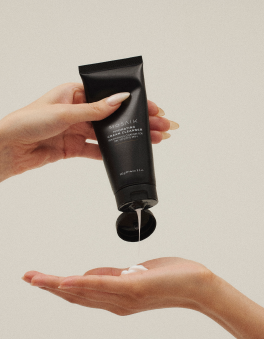Daily Bathtime Tips Inspired by Japan’s Bathing Culture
For many of us, taking a shower is the quickest and easiest way to get clean. It may take as little as ten minutes of our time at the beginning or end of the day, and doesn’t serve as much other than to cleanse our body and make our hair shiny again.
But replacing that shower with a relaxing bath and taking some time for yourself can make all the difference to your wellbeing. In Japan, there is a deep-rooted appreciation for baths, not just for their ability to cleanse our bodies, but also to de-stress and refresh our minds. There is a lot to learn from those practices.
Bathing in Japan
In Japan, there are many different types of baths. The most famous is the onsen (hot spring bath), which is usually a shared public bath that uses water heated naturally by the hot springs. There are also sento, which are public shared baths heated manually, and ofuro, which is a more general term for bath, and most commonly used for taking a bath at home.
“In Japan, there is a deep-rooted appreciation for baths, not just for their ability to cleanse our bodies, but also to de-stress and refresh our minds.”
It’s said that Japan’s bathing culture started around the 6th Century with the introduction of Buddhism. It was regarded as a good way to ward off illness and maintain hygiene. For a long time, baths were not regarded as a place for enjoyment as they are now, but a place for spiritual purification or for health. Because of this, it is still customary to wash yourself before entering the bath to keep the bath clean (especially if someone else is going to use it too).
These days, going to a public bath in Japan is like going to a spa. It’s a place to relax and have an enjoyable time with existing and new friends, but now there are recognised health benefits associated with different types of onsen. Many of them contain essential natural minerals which, when absorbed during bathing, can result in improved blood flow and oxygen distribution around the body, smooth skin, or claim to help with bodily aches and pains, for example.
Bathing for physical and mental health
While it’s difficult to bring the health benefits of naturally occurring onsen to our own home, there are some parts of Japanese bathing culture that we can learn from.
The very act of taking a bath has been proven to reduce swelling, improve sleep, soothe muscles and joints, reduce stress and anxiety, and can even moisturise the skin. The best time to take a bath is roughly an hour or two before sleep, allowing ample time for your body to cool down after the bath and naturally leading to feeling sleepy. The best water temperature, according to Japanese wisdom, is 40 degrees, and the recommended time to soak — all the way up to the shoulders for full coverage (literally) — is roughly 10 minutes.
A good way to take this to the next level is to use aromatherapy. Hinoki bath balls are often used for this in Japan, creating a relaxing woodland scent and even doubling as massage balls for your feet. Some other options are to use oils, salts, or plants. For example, adding a cup of olive oil to your bath may help moisturise your skin, whereas Epsom salts can ease muscle tension and make skin softer and smoother. This can somewhat replicate the effect of Japanese onsen, which have naturally occurring minerals like Magnesium that Epsom salts have.
By adding a bath to your daily routine, not only will your skin and joints thank you, but you’ll be adding some much-needed me time to your schedule, helping your overall mental wellbeing and sense of relaxation.
And after taking a well-deserved relaxing bath, don’t forget to hydrate your body internally with a full glass of water and externally by applying body moisturiser.
At MOSAIK, we believe in creating these habits and routines not just to keep our skin healthy, but also to help us maintain our mental wellbeing. Like a warm and comforting bath, MOSAIK is always there when you need to refresh and relax.













